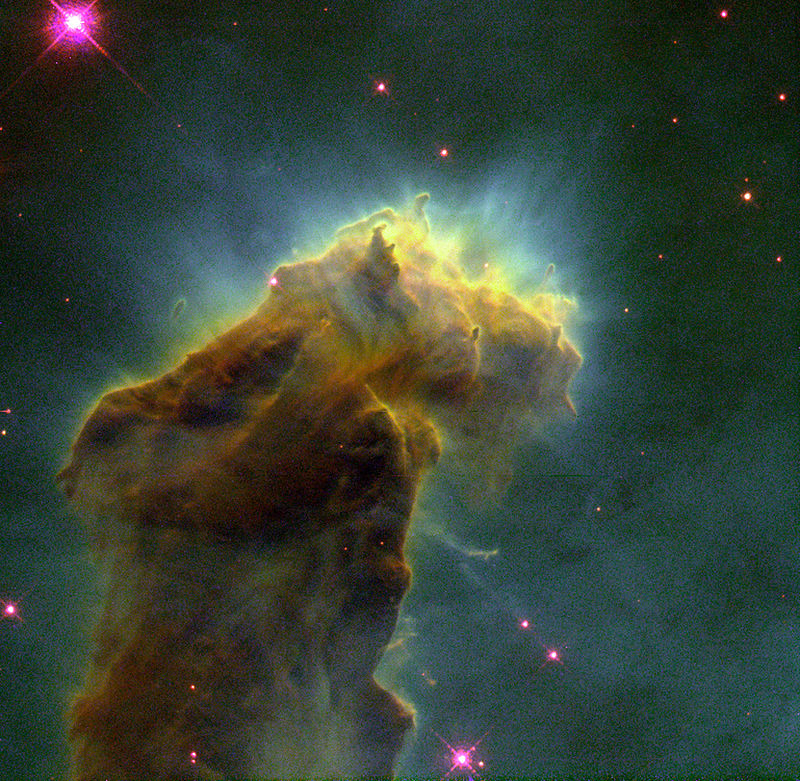I have discussed a few celestial objects out in the great unknown so far: the Moon, black holes, anti-matter, and more. But I have yet to discuss one of my personal favorite structures in outer space: The Pillars of Creation. This discovery constantly makes me wonder about all the possibilities that could exist in our own solar system and beyond.

Close up of one of the Pillars
The Pillars of Creation are plumes of dust and gases organized into column-like shapes, or ‘pillars’. These pillars are located in a nebula, namely the Eagle Nebula. A nebula is a large collection of dust, gas, and small particles floating together in outer space like a large cloud. The Eagle Nebula, discovered in 1745, is located about 7,000 light years away from Earth. To put magnitude into perspective, the Eagle Nebula is massive. The nebula itself spans the area of 3,850 square light years! The Pillars of Creation, meanwhile, are a tiny subsection of the Eagle Nebula, only spanning a distance of 5 light years. Regardless, these are massive distances. Even the smallest tips of the fingers on one of the columns are numerous times larger than our solar system.
These Pillars were originally captured in 1995 by the Hubble Space telescope, and was recaptured again by the Hubble Space Telescope in 2014. In order to capture the entire image, the Hubble needed to take 32 images, each of the different sections of the pillars. Once these images were stitched together, we have the breath-taking image that we know today.

The stitched final image taken by the Hubble Space Telescope
I used to think the Pillars of Creation were called the Pillars of Creation because they were somehow a symbol of creation and birth. After doing a little research, however, I realized this isn’t entirely true. I discovered they are named the Pillars of Creation because the gases and particles composing them are in the stage of forming new stars! Unfortunately, however, these newly forming stars may already be gone. The Spitzer Space Telescope, launched in 2003, detected an immense heat wave coming from the Eagle Nebula. Scientists theorize this heat wave could have been the result of a supernova from a nearby star that exploded nearly 6,000 years ago. This explosion would surely destroy the delicate pillars of gas and particles. The interesting part is that since the Pillars of Creation are 7,000 light years away, we won’t be able to observe this supernova explosion until another 1,000 years.
I still find it amazing that up in the black, night sky, there are these extremely colorful, vibrant phenomena existing everywhere. This being said, it confuses me slightly why the night sky is black in the first place, and not a colorful rainbow like what is observed with The Pillars of Creation. Perhaps an investigation for another time.
My friend Peri says they look like Abbott and Costello from the movie “Arrival”
